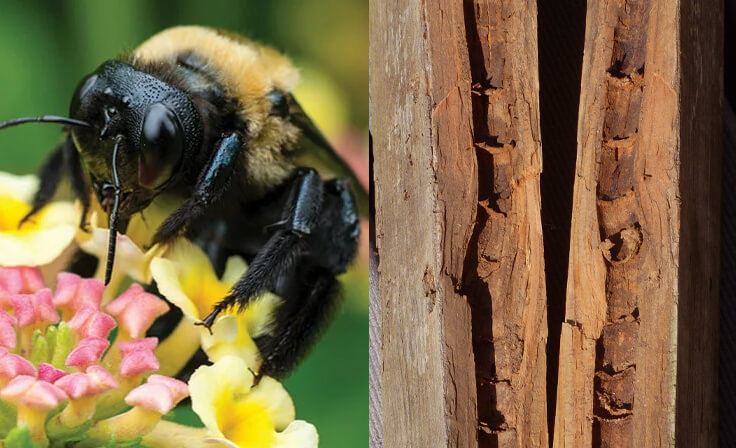They are solitary bees and are not part of a larger hive community.
Carpenter bees concrete siding.
Step 2 identifying a problem you have a carpenter bee problem if you notice many large bees flying around a wood surface.
Carpenter bees prefer to excavate their nests in soft unpainted wood such as the back side of fascia boards siding window trim and porch ceilings.
Carpenter bees are large black and yellow bees frequently seen in spring hovering around the eaves of a house or the underside of a deck or porch rail they are often mistaken for bumble bees but differ in that they have a black shiny tail section the carpenter bee is so called because of its habit of excavating tunnels in wood with its strong jaws.
Carpenter bees can do extensive.
The only protection against carpenter bees is to regularly paint any bare wood or use vinyl or other types of siding.
They make holes in siding soffits decks posts and the painted or bare wood of barns and sheds especially when the paint is.
If you would like a sample or quote on our prefinished fiber cement siding please complete the simple inquiry form at contact us through our website or call us at 800 948 4349.
Instead they burrow into soft woods such as the siding of a house to live in and lay larvae.
In short remember there are solutions for carpenter bees fiber cement siding and shakes.
Carpenter bees are most active during mid of march and less active during november until december.
The female carpenter bee is the one who makes the hole by chewing through the wood.
Carpenter bees are so named because they build nests by boring holes in weathered intact wood often the exterior walls and siding of homes and other structures.
Several kinds of bees can take up residence under a slab of cement or concrete within a building s foundation or behind a brick wall.
A closer look at a hole in wood shows carpenter bee inside.
Can bees make a hole in cement.
They are active foraging in daytime looking for pollen as their primary food source during march they will look for a nest as the shelter for their eggs until they become larvae.
The carpenter bee is so called because of where it chooses to make it s home.
More information available at.
Carpenter bees or termites for instance will find very little to work with when dealing with fiber cement siding.

